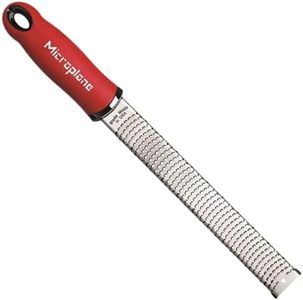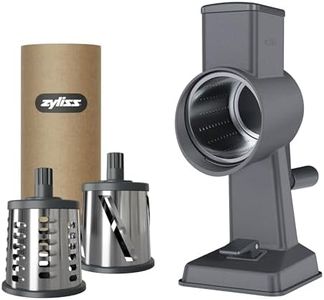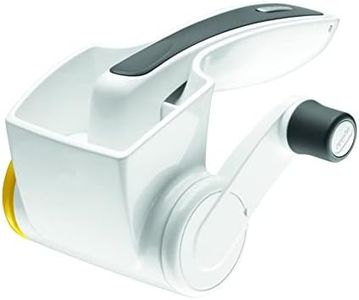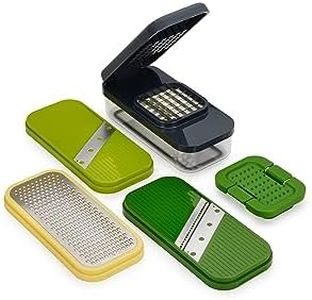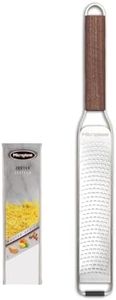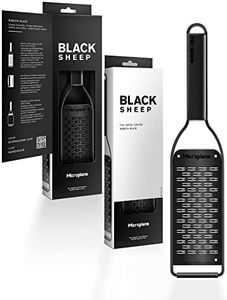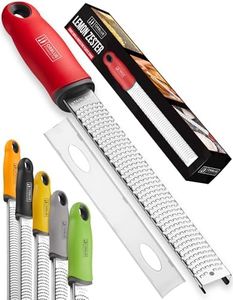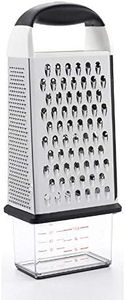We Use CookiesWe use cookies to enhance the security, performance,
functionality and for analytical and promotional activities. By continuing to browse this site you
are agreeing to our privacy policy
10 Best Cheese Graters
From leading brands and best sellers available on the web.#10
Buying Guide for the Best Cheese Graters
Choosing the right cheese grater can make food preparation easier and more enjoyable. Since there are several types of cheese graters with different blade shapes and sizes, it’s important to consider how you’ll use your grater in everyday cooking. Before making a purchase, think about which types of cheese you prefer, how much food you typically prepare, and whether you want a tool that can handle more than just cheese—like vegetables or chocolate. The right cheese grater should feel comfortable to use, be safe, and fit your kitchen needs.Type of GraterThere are several main types of cheese graters, including box graters, handheld flat graters, rotary graters, and microplane graters. Box graters are versatile with multiple grating surfaces for different textures; they work great for a variety of foods but are larger. Handheld flat graters are slim and easy to store, good for small amounts of cheese. Rotary graters keep your hands safer since the cheese is enclosed, and work best for hard cheeses. Microplane graters offer very fine shreds, perfect for garnishing. If you want one tool for many uses, consider a box grater. If you mainly want to grate over dishes or need very fine results, a microplane can be the right choice.
Grating Surface and TextureGrating surfaces can range from very fine to coarse holes, each providing a different texture. Fine graters are best for hard cheeses like parmesan or zesting citrus fruits, creating powdery results. Medium surfaces produce shreds suitable for tacos and salads, while coarse holes work well for soft cheeses like cheddar or when you need chunkier pieces for sauces. Think about the dishes you most often prepare—if you need cheese for melting on pizza, a medium or coarse size is great. For garnishing with finely grated cheese, choose a finer surface.
Material and DurabilityCheese graters are most commonly made from stainless steel, which is durable and resists rust, or from plastic parts combined with steel blades. A sturdy, rust-resistant material will last longer and work better. Graters with thin metal may bend or dull quickly, so look for ones that feel solid and robust. Choose a grater that holds up to frequent use if you cook often, or go for lighter materials if you just use it occasionally.
Ease of CleaningSome graters can be tricky to clean, especially if cheese gets stuck in crevices. Simpler, flatter designs are usually easier to rinse or wash by hand. Box graters may be harder to clean inside corners, while rotary graters can sometimes be taken apart for washing. If you prefer to use a dishwasher, check whether the grater is labeled as dishwasher safe. Choose a grater that's easy to clean if you’ll use it frequently or dislike washing up by hand.
Grip and SafetyHaving a comfortable handle and a design that prevents slipping is important for safe grating, especially when working with hard cheeses. Look for non-slip bases or rubberized handles if grip is important to you, or if you struggle with hand strength. Rotary and enclosed graters offer extra finger protection, ideal if you’re concerned about accidental scrapes. If you grate large amounts or have kids helping in the kitchen, pay extra attention to these features.
